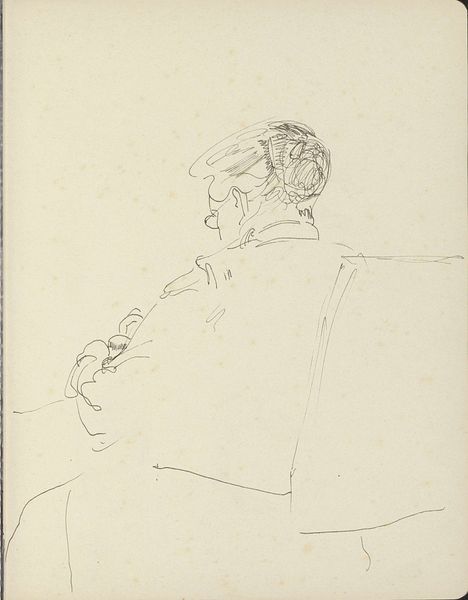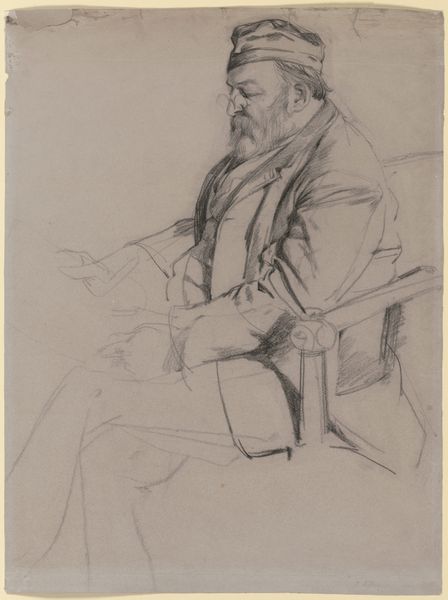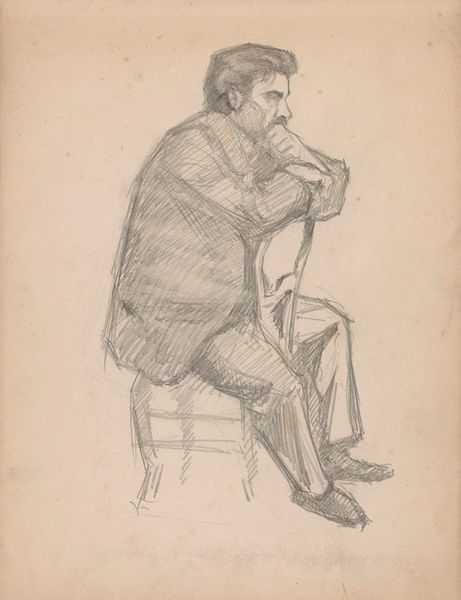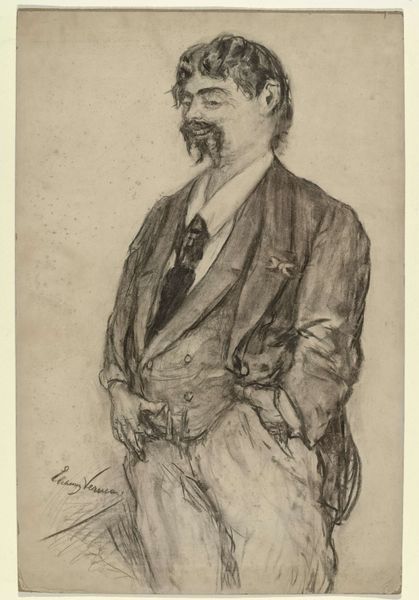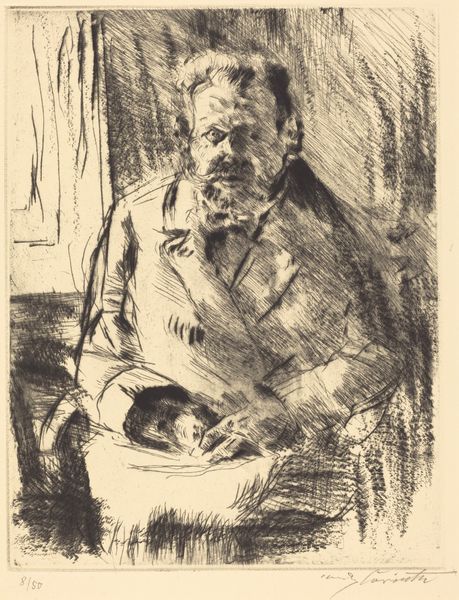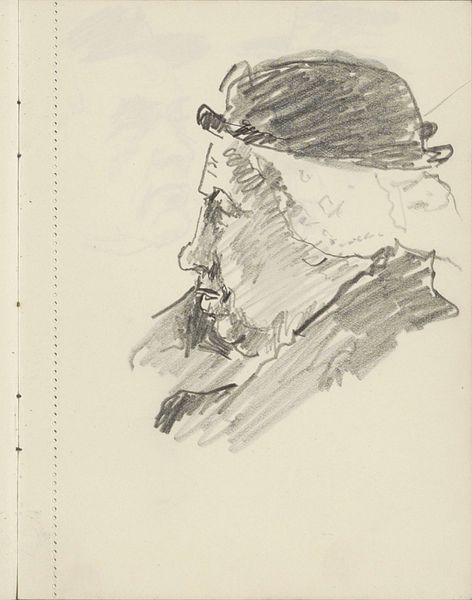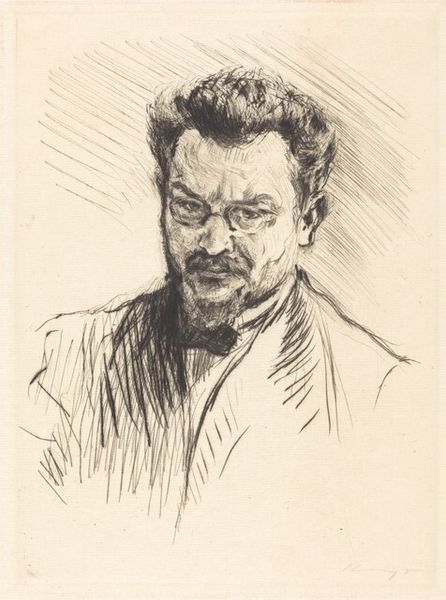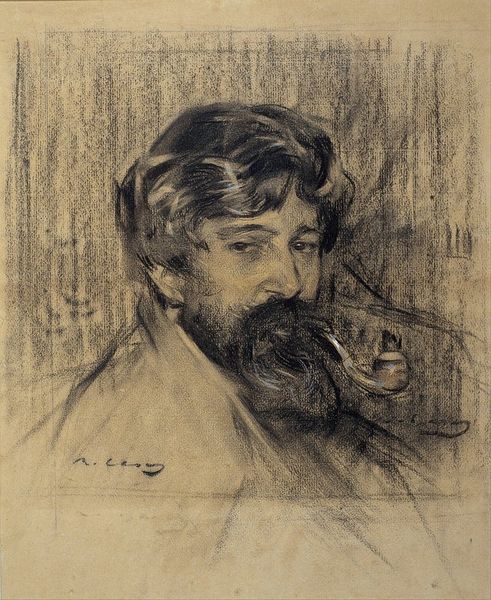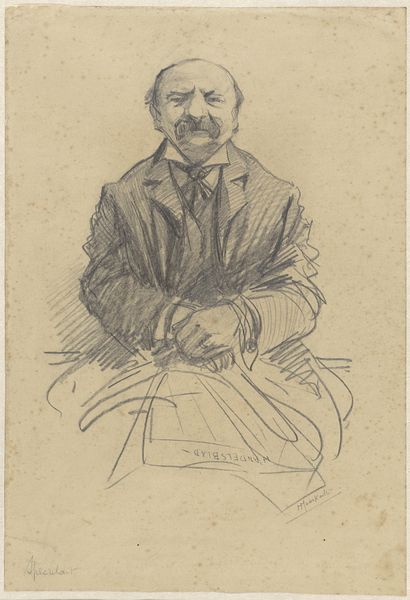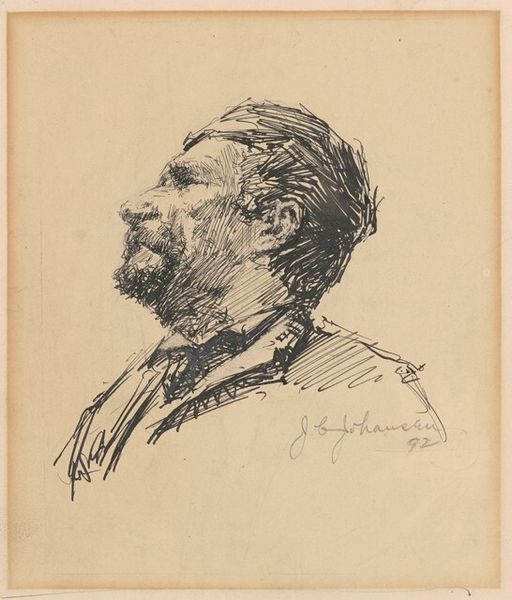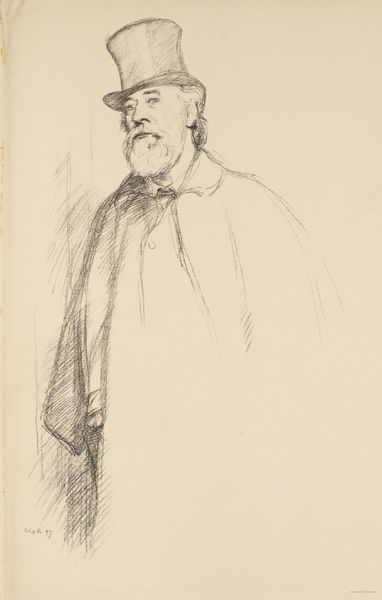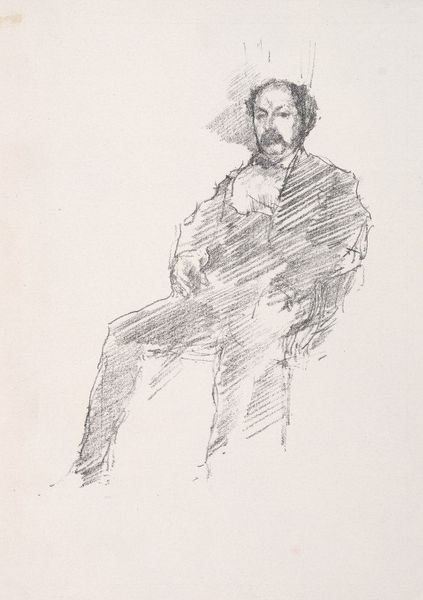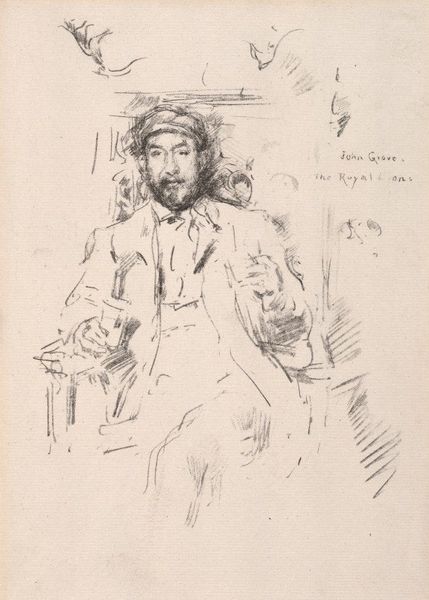
Copyright: Public domain
Editor: Here we have "Pirtti," a pencil drawing by Albert Edelfelt from 1901. The sketch is delicate, but something about the sitter's posture suggests a working-class individual. What can you tell me about it? Curator: Let’s consider Edelfelt's choice of materials here: a simple pencil and paper. This suggests accessibility, a deliberate turn away from the grand oil portraits of the elite. Edelfelt seems more interested in capturing the likeness of a person through readily available and relatively inexpensive materials, doesn't he? Who was Pirtti? Was this commissioned, or a personal study? The informality of the medium encourages a focus on the everyday. Editor: That’s interesting, because I would’ve seen pencil sketches simply as preliminary works. Curator: Exactly. It challenges that hierarchy, doesn’t it? Think about the labor involved. Instead of intricate layers of paint and varnish demanding highly specialized skills, we see the direct trace of the artist's hand, the graphite laid directly onto the support. It highlights the process, the *making* of the image. What does that immediacy convey? Editor: A certain… vulnerability? A more direct connection to the subject? Curator: Perhaps. And considering the date, 1901, how does it relate to broader social movements? Were artists exploring alternative modes of production to reflect changing social structures, a shift away from opulent commissions to capture the essence of ordinary people? What do you think the mass production and distribution of the drawing could have symbolized at that time? Editor: That reframes it for me, really making me think about Edelfelt's intentions. Thanks for shedding some light on "Pirtti"! Curator: My pleasure. It is always rewarding to rethink art by thinking about how it was created.
Comments
No comments
Be the first to comment and join the conversation on the ultimate creative platform.
